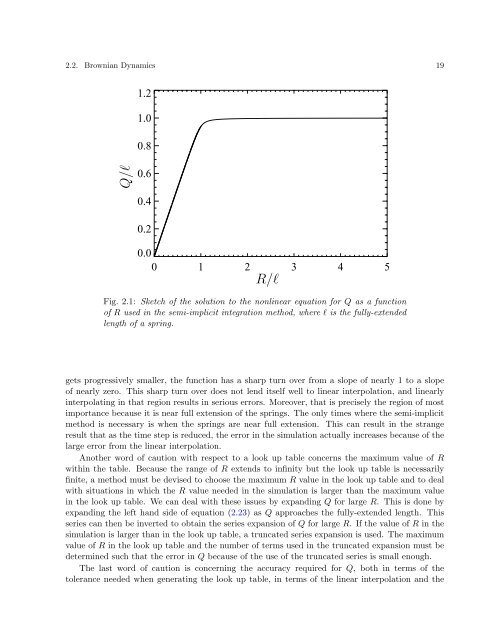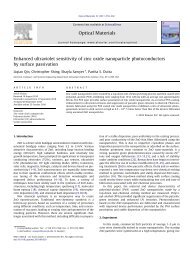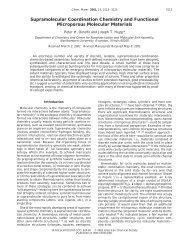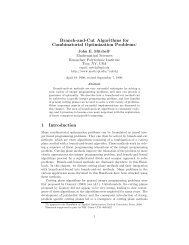Systematic development of coarse-grained polymer models Patrick ...
Systematic development of coarse-grained polymer models Patrick ...
Systematic development of coarse-grained polymer models Patrick ...
You also want an ePaper? Increase the reach of your titles
YUMPU automatically turns print PDFs into web optimized ePapers that Google loves.
2.2. Brownian Dynamics 19<br />
Q/ℓ<br />
1.2<br />
1.0<br />
0.8<br />
0.6<br />
0.4<br />
0.2<br />
0.0<br />
0 1 2 3 4 5<br />
R/ℓ<br />
Fig. 2.1: Sketch <strong>of</strong> the solution to the nonlinear equation for Q as a function<br />
<strong>of</strong> R used in the semi-implicit integration method, where ℓ is the fully-extended<br />
length <strong>of</strong> a spring.<br />
gets progressively smaller, the function has a sharp turn over from a slope <strong>of</strong> nearly 1 to a slope<br />
<strong>of</strong> nearly zero. This sharp turn over does not lend itself well to linear interpolation, and linearly<br />
interpolating in that region results in serious errors. Moreover, that is precisely the region <strong>of</strong> most<br />
importance because it is near full extension <strong>of</strong> the springs. The only times where the semi-implicit<br />
method is necessary is when the springs are near full extension. This can result in the strange<br />
result that as the time step is reduced, the error in the simulation actually increases because <strong>of</strong> the<br />
large error from the linear interpolation.<br />
Another word <strong>of</strong> caution with respect to a look up table concerns the maximum value <strong>of</strong> R<br />
within the table. Because the range <strong>of</strong> R extends to infinity but the look up table is necessarily<br />
finite, a method must be devised to choose the maximum R value in the look up table and to deal<br />
with situations in which the R value needed in the simulation is larger than the maximum value<br />
in the look up table. We can deal with these issues by expanding Q for large R. This is done by<br />
expanding the left hand side <strong>of</strong> equation (2.23) asQ approaches the fully-extended length. This<br />
series can then be inverted to obtain the series expansion <strong>of</strong> Q for large R. If the value <strong>of</strong> R in the<br />
simulation is larger than in the look up table, a truncated series expansion is used. The maximum<br />
value <strong>of</strong> R in the look up table and the number <strong>of</strong> terms used in the truncated expansion must be<br />
determined such that the error in Q because <strong>of</strong> the use <strong>of</strong> the truncated series is small enough.<br />
The last word <strong>of</strong> caution is concerning the accuracy required for Q, both in terms <strong>of</strong> the<br />
tolerance needed when generating the look up table, in terms <strong>of</strong> the linear interpolation and the







